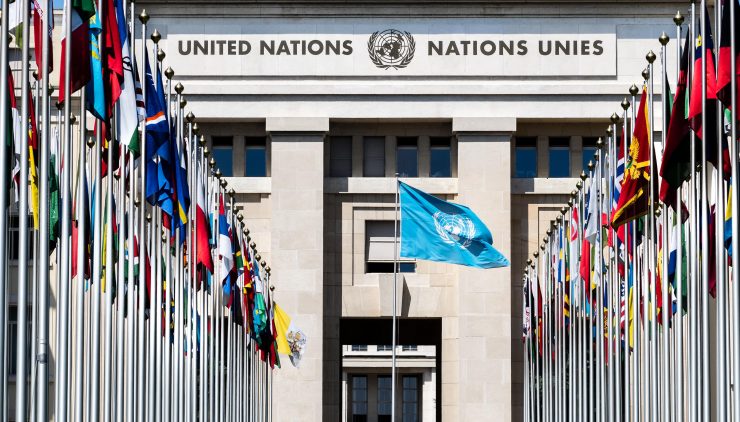This website uses cookies so that we can provide you with the best user experience possible. Cookie information is stored in your browser and performs functions such as recognising you when you return to our website and helping our team to understand which sections of the website you find most interesting and useful.
Vance Center Contributes to Environment Report at the Human Rights Council in Geneva
March 2020
(UN Offices in Geneva | Photo Credit: Shutterstock)
Dr. David Boyd, the UN Special Rapporteur on Human Rights and the Environment, presented his second annual report to the UN Human Rights Council this month in Geneva. The report set out a diverse array of good practices related to human rights and the environment, ranging from energy decarbonization plans in the Marshall Islands to recognition of indigenous land rights in Guatemala and conservation land protection in Slovenia.
Significantly, Dr. Boyd presented the landmark finding that 80% of UN Member States – 156 of 193 states – have now recognized a human right to a healthy environment in constitutions, statutes or treaties. In reaching this conclusion, the Special Rapporteur drew heavily on research coordinated by the Vance Center’s Environment Program, which surveyed hundreds of national, territorial and subnational jurisdictions. Most of the research was carried out by Clifford Chance, making it that firm’s largest ever pro bono project. White & Case also made significant contributions to the research.
In a statement, Dr. Boyd said “I am immensely grateful to Clifford Chance, the Vance Center, and all of the legal experts who made this gargantuan research project possible. The results provide strong support for the United Nations to pass a pioneering resolution recognizing that everyone, everywhere, has a fundamental human right to live in a healthy environment.”The human right to a healthy environment has proliferated at an extraordinary pace over the last 30 years. While such a right is no guarantee of improved environmental outcomes, there is some evidence that it leads to stronger environmental laws and policies, improved implementation and enforcement, greater public participation in environmental decision-making, and a level playing field with other rights. Some have also argued that a right would help protect environmental rights defenders, who are increasingly under attack in many parts of the world. According to data gathered by Global Witness, 164 environmental defenders were killed in 2018, and almost 1,600 were murdered in the preceding 15 years.
One example of the value of the right to a healthy environment came in a 2019 decision of the Supreme Court of Chile. Toxic air pollution in the industrial towns of Quintero and Puchancaví left hundreds of residents requiring medical treatment. In a case brought by local organizers in 2018, the Supreme Court invoked Chile’s right to a healthy environment in ordering the government to carry out extensive remedial measures. Working with Weil Gotshal, the Vance Center advised its client Human Rights Watch on an amicus brief in that case.
Dr. Boyd’s finding of the increasing adoption of the right to a healthy environment bolsters the campaign for a formal United Nations instrument recognizing the right at international law. His report shows that the right is already widely recognized by UN Member States, and the time for international recognition has now come.
The relationship between human rights and the environment is wide-ranging. In 2018, Dr. Boyd’s predecessor and Vance Center client Professor John Knox released a landmark set of framework principles on human rights and the environment that are already reflected in international law. The principles recognize that rights such as free expression, public participation and freedom from discrimination are all vital components of effective environmental protection.


